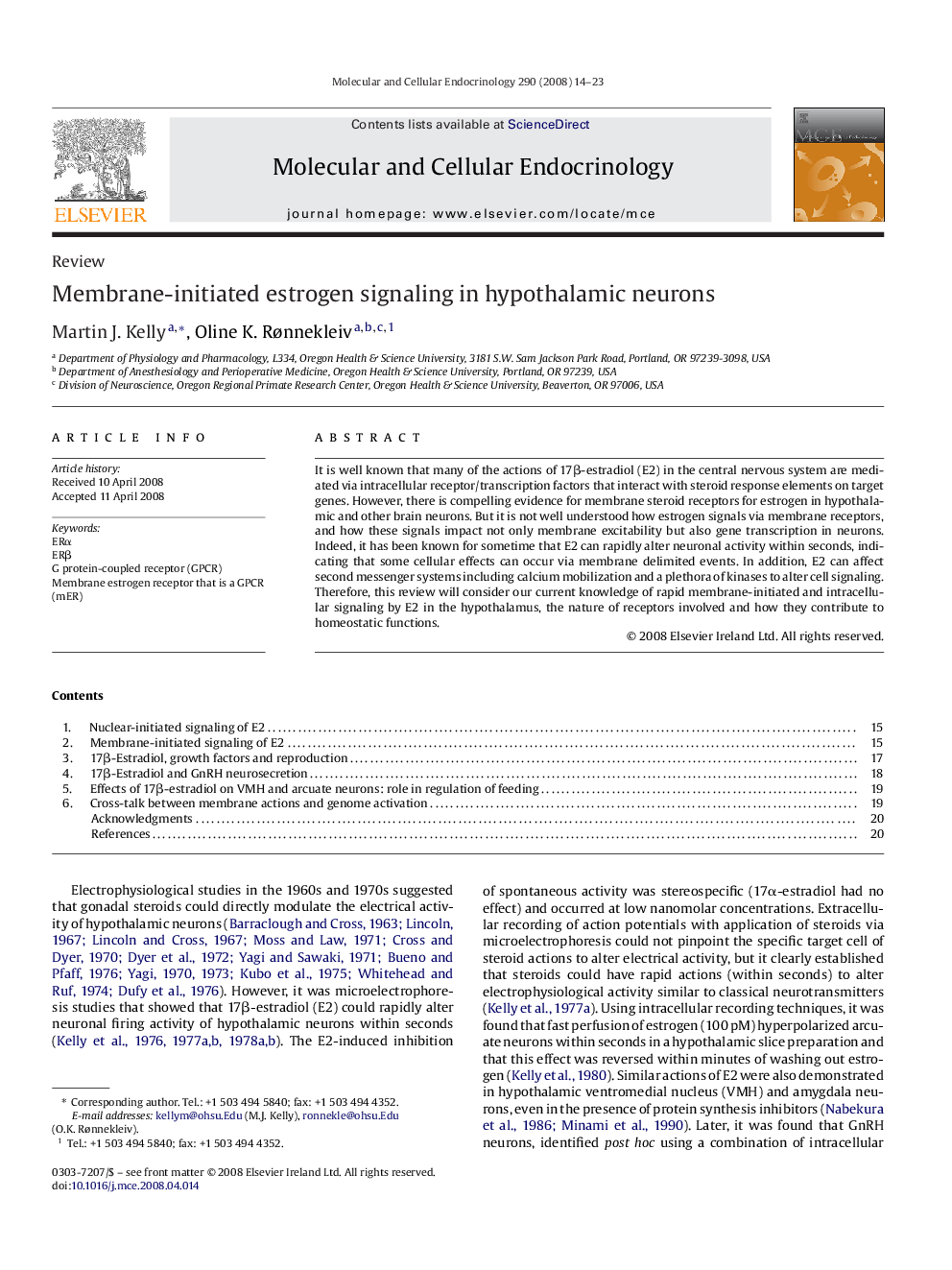| کد مقاله | کد نشریه | سال انتشار | مقاله انگلیسی | نسخه تمام متن |
|---|---|---|---|---|
| 2197526 | 1550971 | 2008 | 10 صفحه PDF | دانلود رایگان |

It is well known that many of the actions of 17β-estradiol (E2) in the central nervous system are mediated via intracellular receptor/transcription factors that interact with steroid response elements on target genes. However, there is compelling evidence for membrane steroid receptors for estrogen in hypothalamic and other brain neurons. But it is not well understood how estrogen signals via membrane receptors, and how these signals impact not only membrane excitability but also gene transcription in neurons. Indeed, it has been known for sometime that E2 can rapidly alter neuronal activity within seconds, indicating that some cellular effects can occur via membrane delimited events. In addition, E2 can affect second messenger systems including calcium mobilization and a plethora of kinases to alter cell signaling. Therefore, this review will consider our current knowledge of rapid membrane-initiated and intracellular signaling by E2 in the hypothalamus, the nature of receptors involved and how they contribute to homeostatic functions.
Journal: Molecular and Cellular Endocrinology - Volume 290, Issues 1–2, 13 August 2008, Pages 14–23